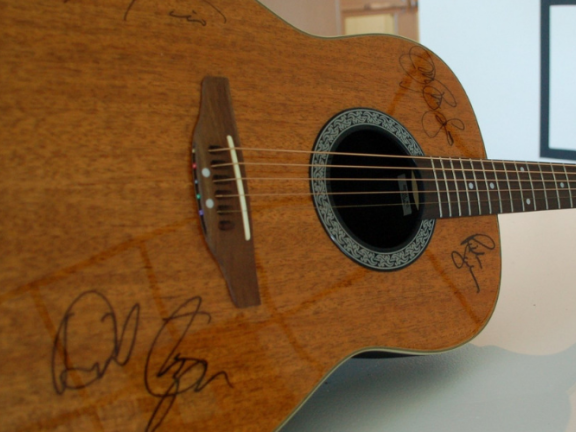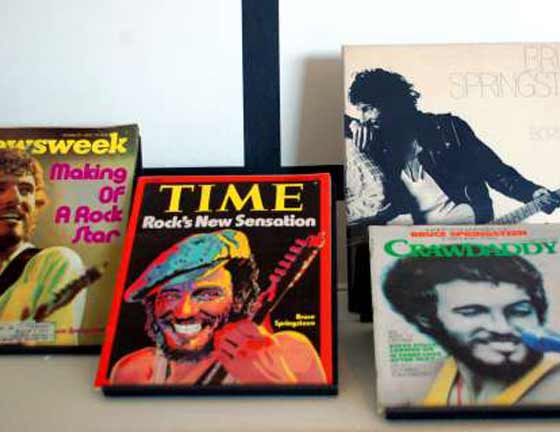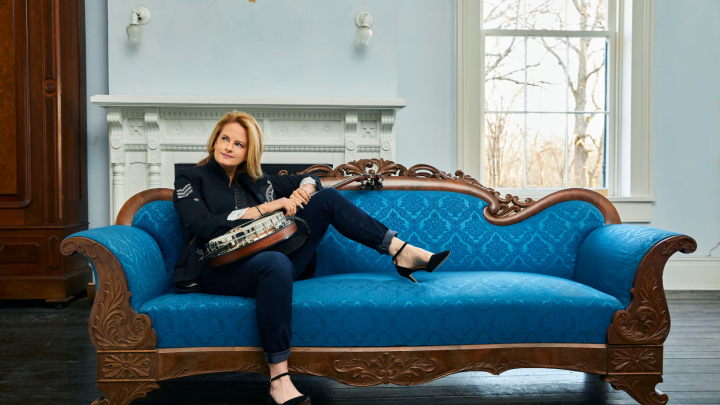Jersey Rocks: A Music Lover's Take

Shen Shellenberger took a look at the Morris Museum's Jersey Rocks exhibit, on view through September 4. When you’re in New Orleans, you can’t help but notice the way that the locals feel about their city and the music the city is known for. Their solid sense of pride about what New Orleans creates and shares with the world comes through over and over again.
I thought about that a lot after my most recent visit to the Big Easy, and I thought – hang with me here for this comparison – about how the Garden State has a rich musical heritage to be proud of as well.
One difference is, though, that many New Jerseyans, even the most passionate of music lovers, have little idea how large a role Jersey artists and venues played in the history of rock & roll. And I’m talking decades before The Boss played at The Stone Pony.
But, after I visited the Morris Museum’s current exhibition, Jersey Rocks: A History of Rock & Roll in the Garden State, I see more clearly where NJ fits into the emergence of rock & roll music in America.

But, why New Jersey? As the exhibition demonstrates, Jersey provided a nearly perfect place to sow these seeds. It is geographically bookended by two major American cities, it had a diverse population and long-standing African American community, and there was easy access to radio and TV markets and an established recording industry. Throw in a ready-made audience - baby boomers who were becoming teens – and you had yourself a musical revolution.
Not everyone jumped on the bandwagon, though. At the beginning of the exhibit is a clipbook showing newspaper articles about how police in some NJ towns – fearing riots or worse – pulled the plug on a couple of scheduled concerts, and there’s also a quote from famous Jersey native son, Frank Sinatra, calling rock & roll “the martial music of every side-burned delinquent on the face of the earth.”
But the detractors were clearly in the minority. When I was growing up in NJ, music was exploding around me like fireworks, and walking through this exhibition was a bit like retracing the steps of my musical coming-of-age.
One area shows photos and line-ups from Tony Mart’s in Somers Point, a spot on the bay with 3 bars and 2 stages, that the exhibition reveals was the “first rock club in New Jersey”, and from Palisades Park – a major music venue in the early days.
More remarkable to me, though, than this visual and audio stroll down memory lane, was finding out just how many artists who made at least a moderate name for themselves had originally hailed from New Jersey.
There’s Connie Francis, for example, an artist who skyrocketed to the top of the charts in 1958 with “Whose Sorry Now” and whose success helped her to break down the invisible but still apparent male-dominated barriers at the time. Or Teaneck’s own Ricky Nelson, whose sweet voice, good looks and charm provided the rock & roll audience with a wholesome idol and who once said that anyone who knocks rock & roll “is just plain square”.
And there are dozens and dozens … and dozens more!
And, as I walked through and took in all the visuals – LP covers, press photos, concert posters, transistor and console radios, a young fan’s 45 case, complete with handwritten index (I had one of those) – and heard the background soundtrack of Jersey artists, I confess that I felt it. I felt that same kind of pride that I’ve so often observed in New Orleans.
It’s great to be part of the legacy. And, the Morris Museum’s Jersey Rocks exhibition shows just how big a part NJ played.
Side notes:
Jersey Rocks closes soon – Sunday, September 4 – but there’s still time to catch a couple events being presented in conjunction with the exhibition.
In 2003, the Morris Museum was awarded the Murtogh D. Guinness collection of historical mechanical musical instruments and mechanical figures, as well as thousands of pieces of programmed media, from player piano rolls to pinned cylinders. In 2007, the Museum opened a permanent installation– Musical Machines & Living Dolls – that features more than 150 pieces from Guinness’ amazing collection. If you visit the Museum, check out a live demonstration of many of the pieces that are held daily – Tuesday through Sunday – at 2:00 PM.
Also on view at the Morris Museum are a couple of non-music-related exhibits:
Visual Thoughts: The Art Quilts of Fiber Revolution displays 19 works by 19 artists, exhibiting under the Fiber Revolution name, that use fiber as a medium to create some amazing works. Open through October 16.
On the Head and In the Hand: 200 Years of Hats and Purses from the Morris Museum Collection is just what the title implies and well worth checking out. On display through September 25.



